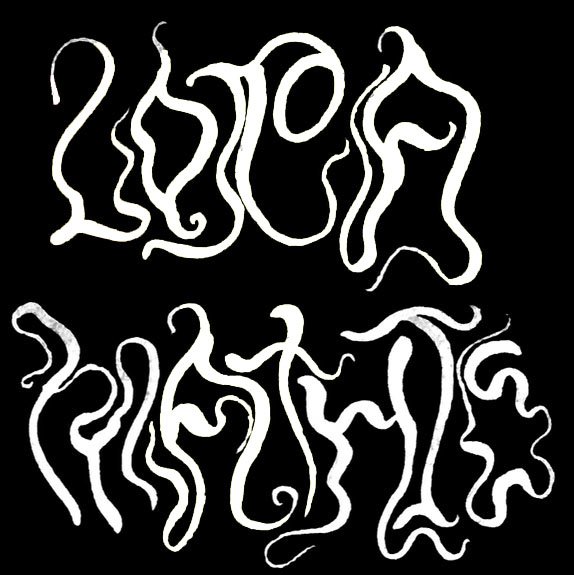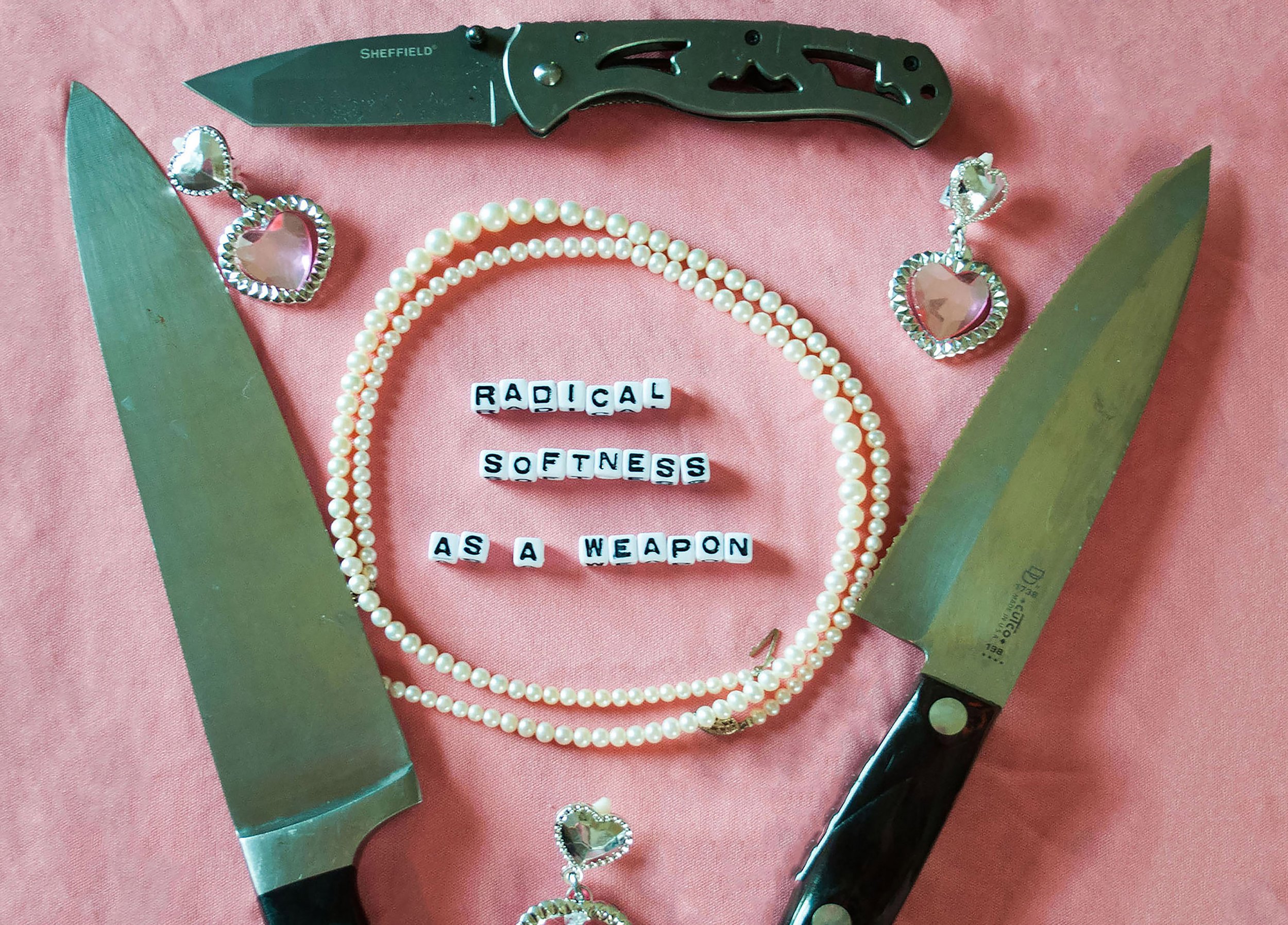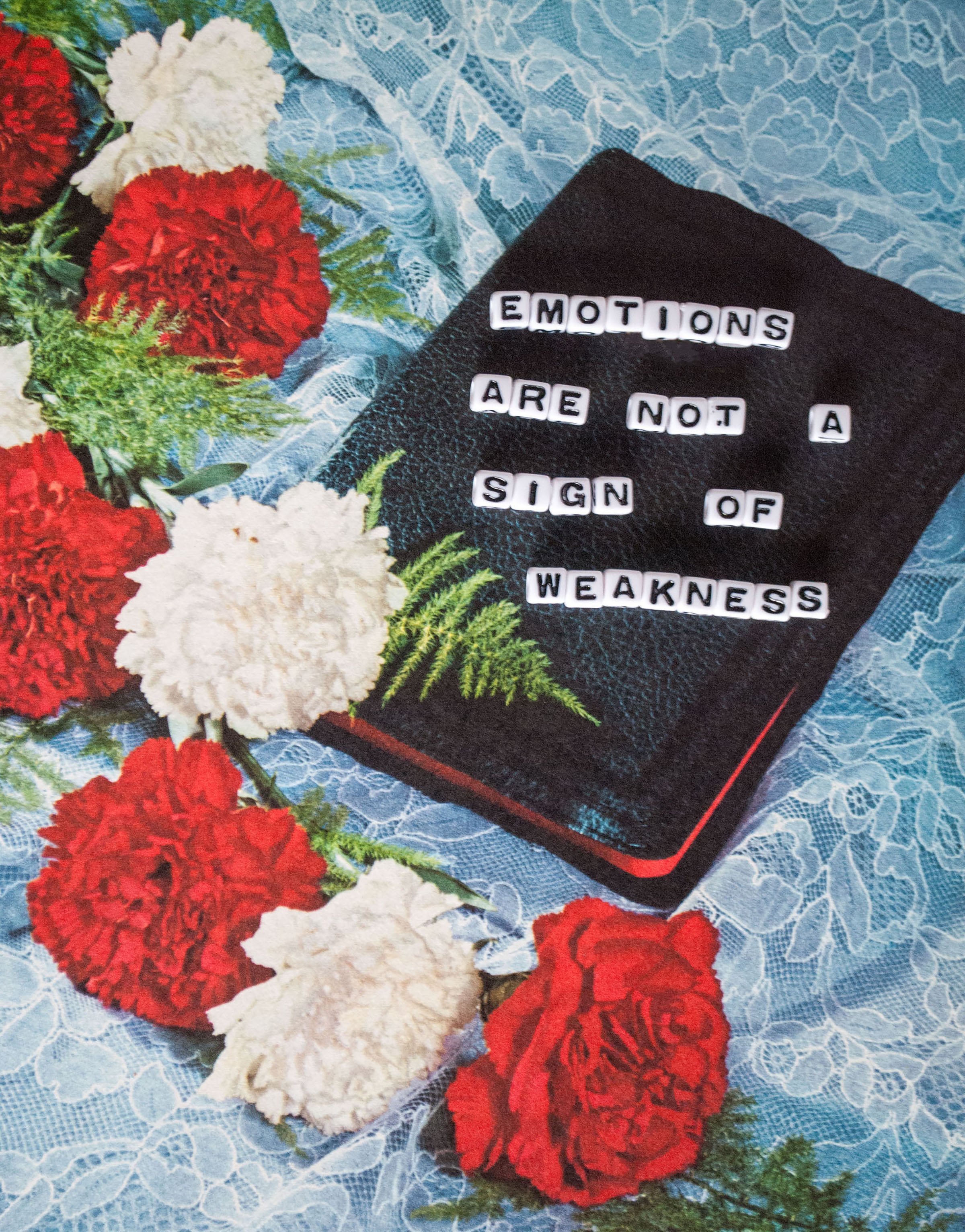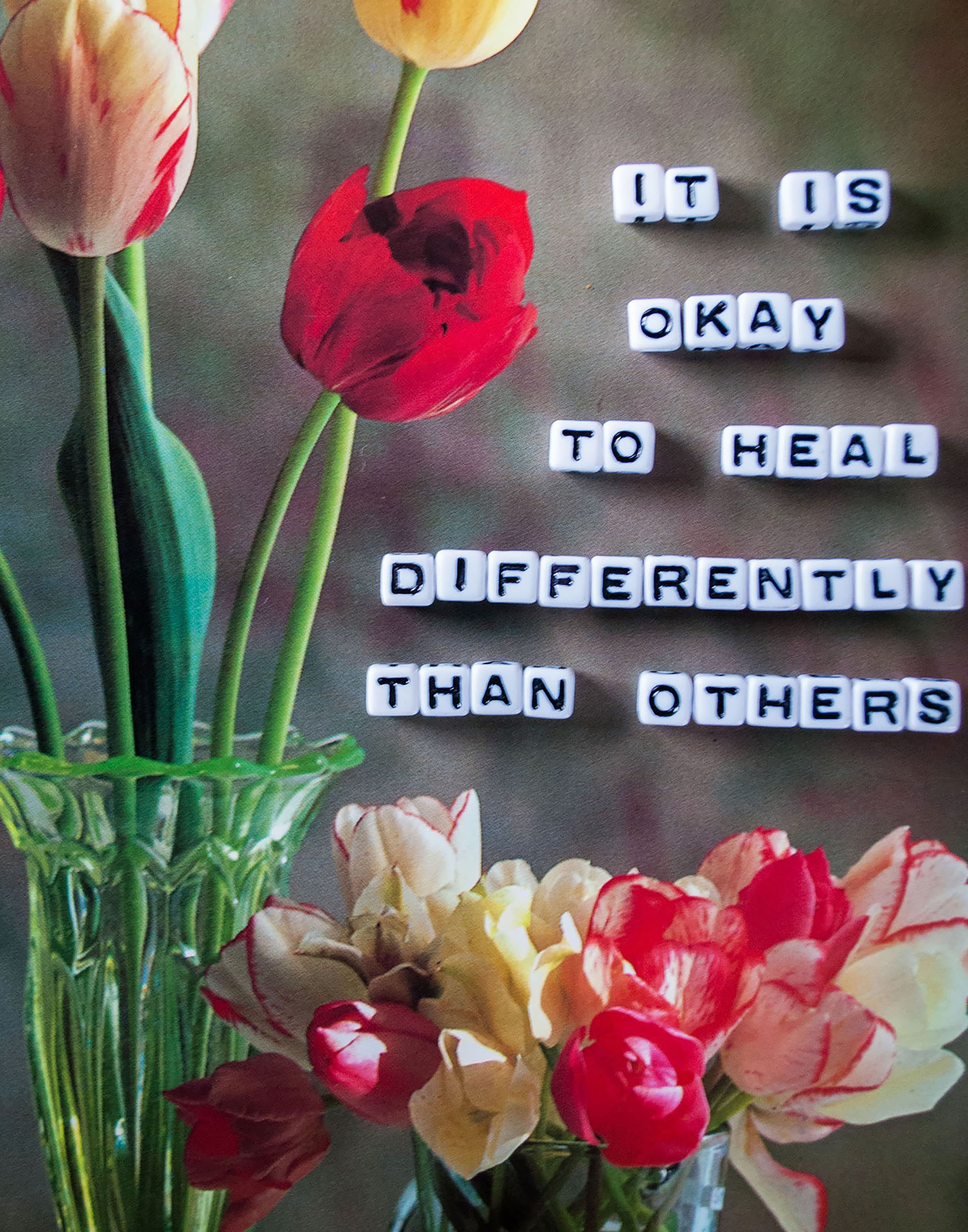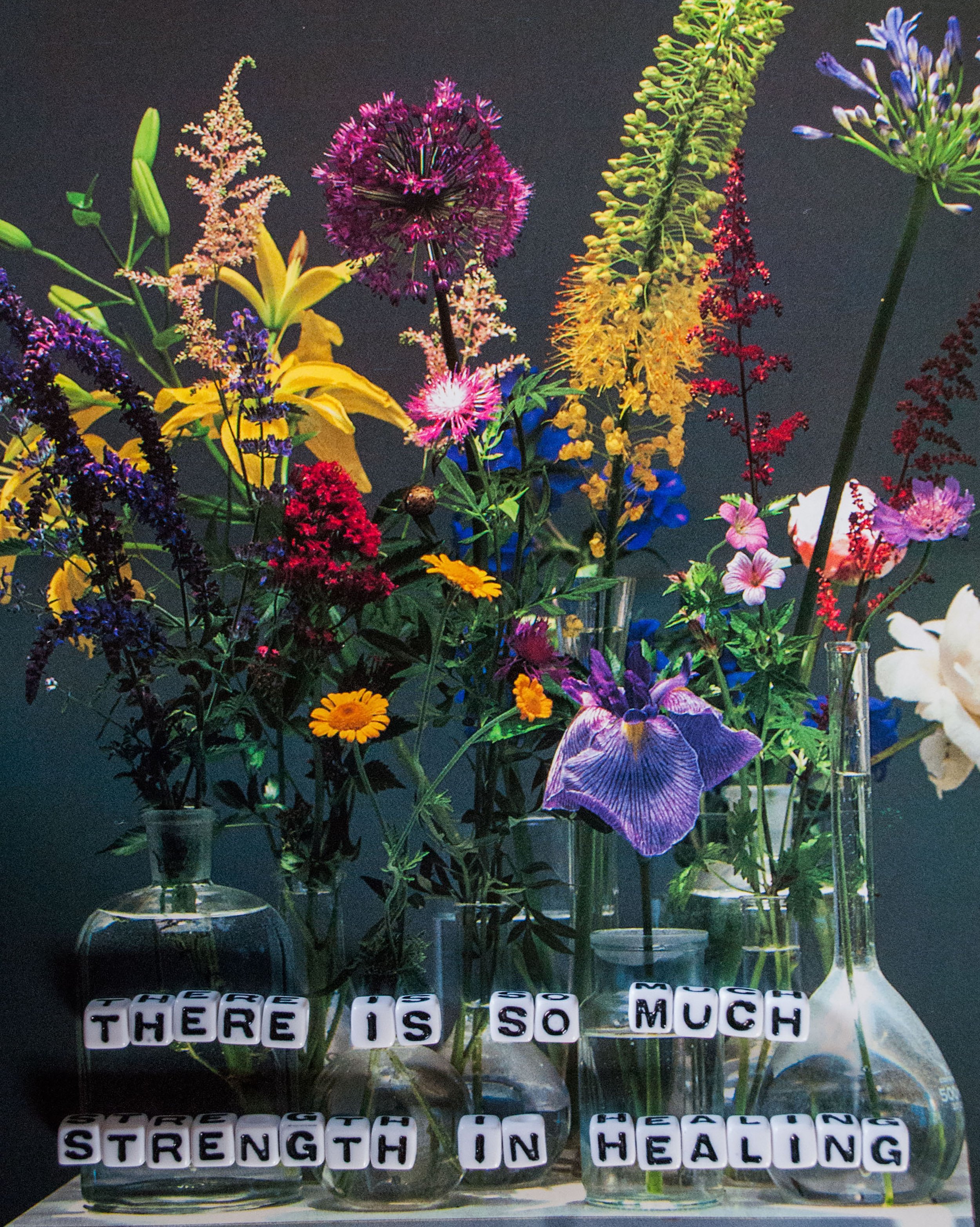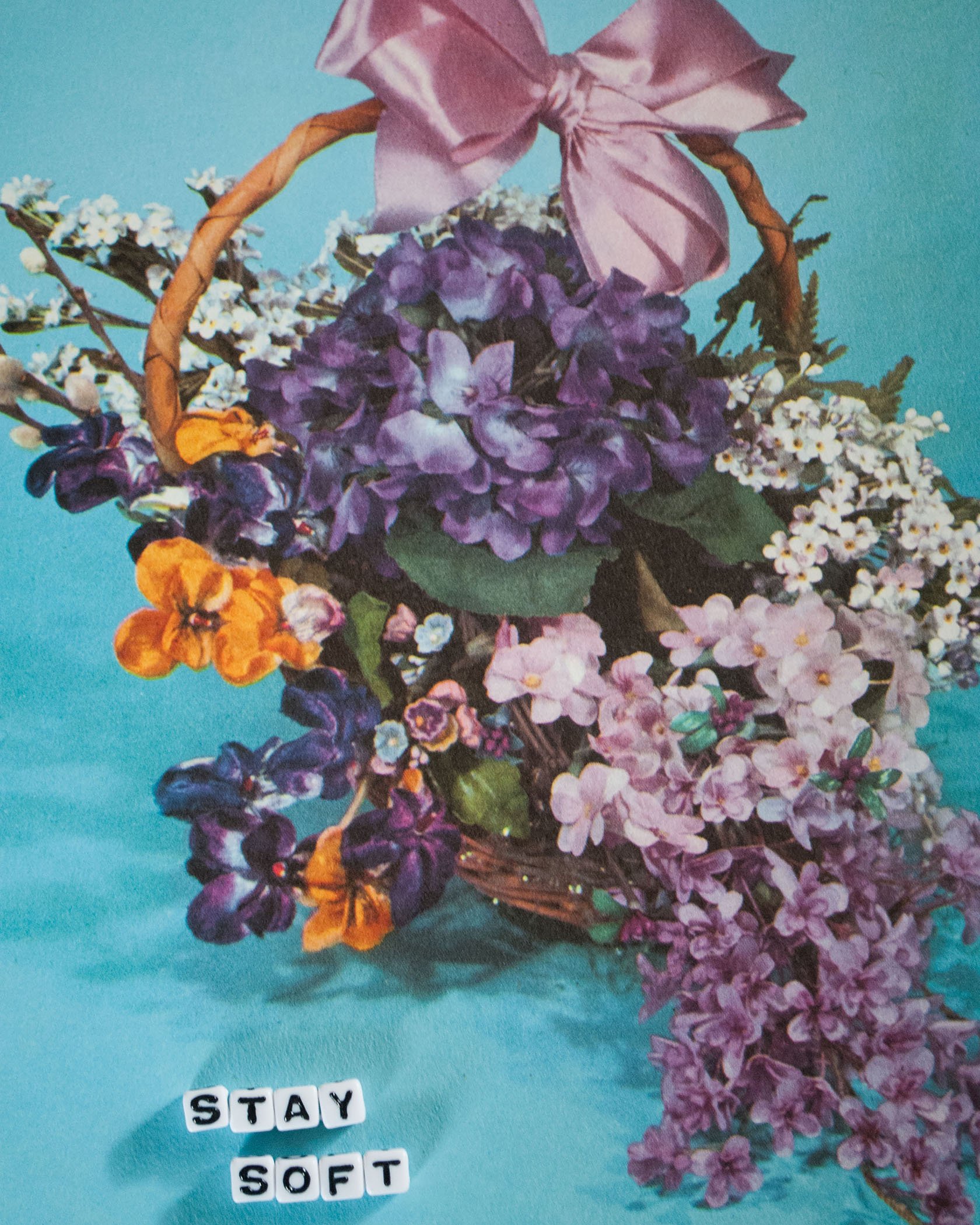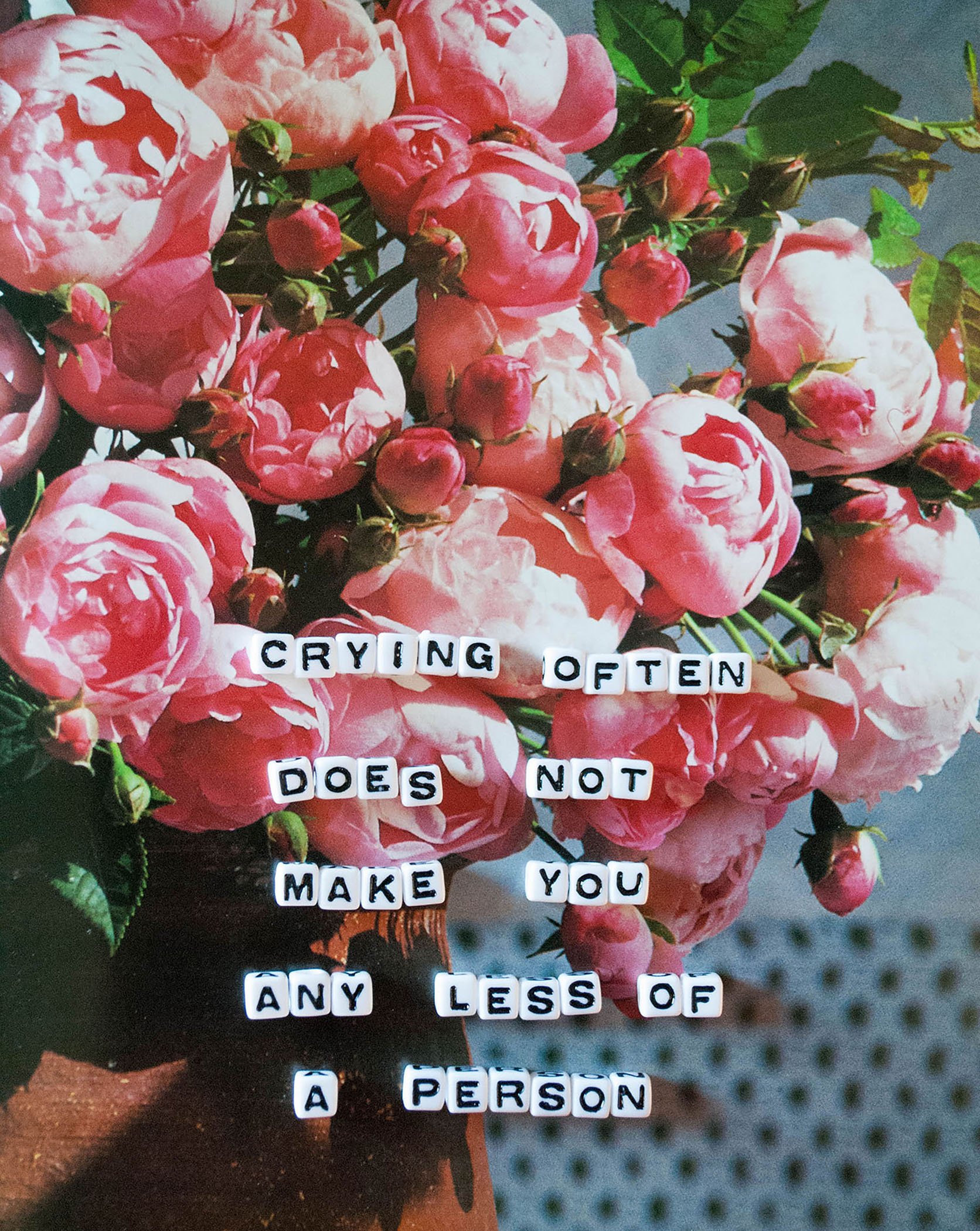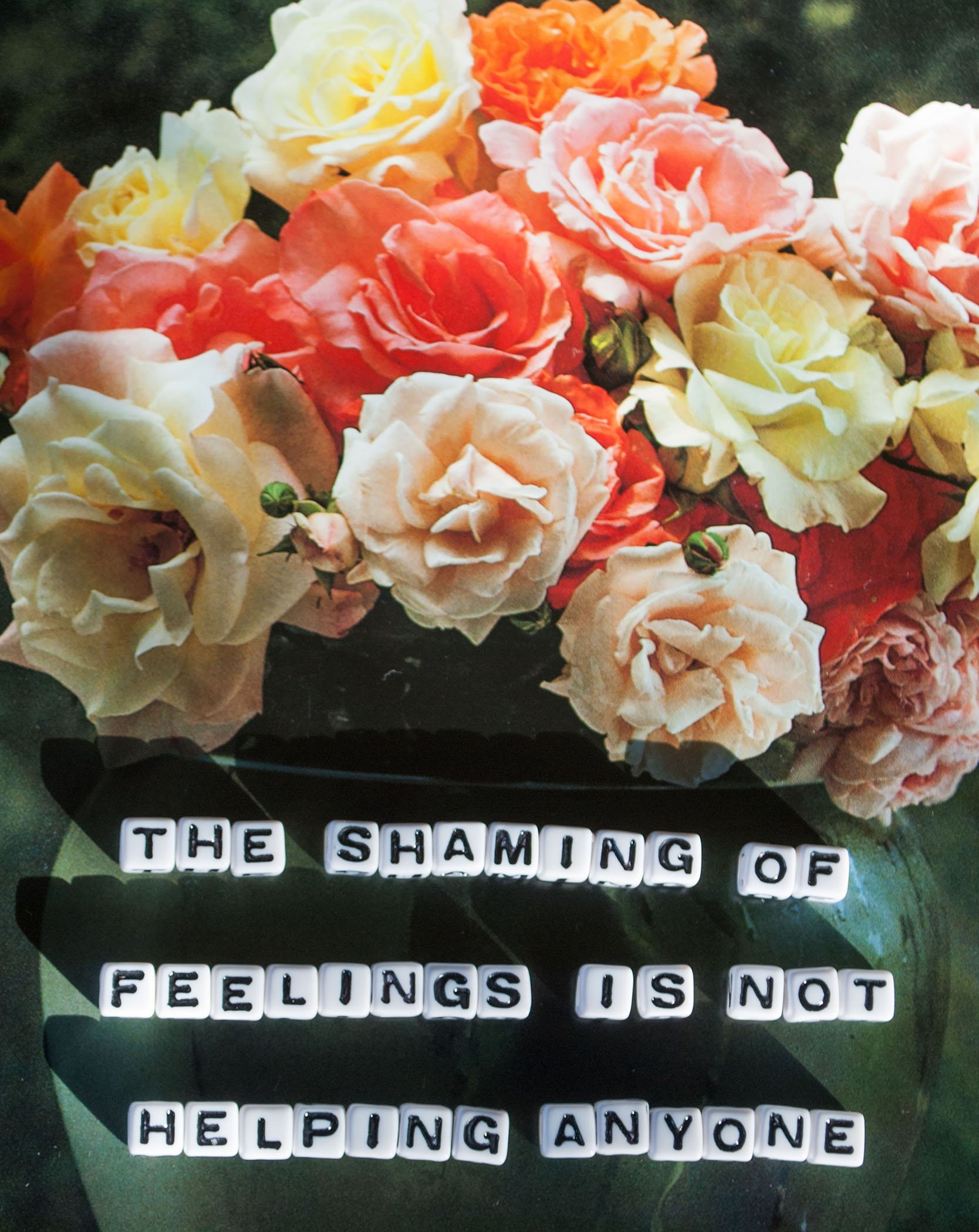Radical Softness as a Weapon (2015)
Mathis coined this term in 2015 as a way of recognizing the power in emotional vulnerability and connection, and the ways that feelings can combat the hetero patriarchal capitalist system. The work began as a series of photos, with letter beads spelling out short and poignant phrases on top of vintage magazine photos of flowers. The work gained popularity online and was explored in various essays by Mathis, and others.
Mathis wrote about the topic in 2016 for Hooligan Magazine, in a piece titled “Vulnerability as a Healing Force.” This piece explores some of their thoughts around radical softness, and on why they prioritize vulnerability. In 2022, Mathis no longer resonates with this piece as strongly, and does not find it to go into enough depth on the work or topic.
The publisher Gender Fail Press also created an essay publication titled “Radical Softness as a Boundless Form of Resistance.” A few years after Gender Fail’s publication came out, Mathis contributed an essay to a later edition of publication, which is now in its 6th edition. Mathis’ essay explores the creation of this term, the place they were in their life, and sharing art online.
Mathis has given workshops and discussions with Radical Softness as the main work they were discussing. They have spoken at Bunker Projects in Pittsburgh, PA and SUNY: Fredonia in a zine workshop and artist talk. Features on the work have been written in Upworthy, Hello Flo, and HuffPost. Images from the series have been featured in Apogee Journal. The work was also spoken about in the 2016 film “drawn together” by the artist Ambivalently Yours.
Note about the work in 2022:
As this is a work which has gained significant attention online, it feels necessary to say that I find my exploration of this topic to be shallow and simply scratching the surface of the wide topic of emotional vulnerability. For context: I created this series when I was 20 years old, and needed tools for climbing my way out of a bad depression, which was connected to my (always ongoing) recovery from childhood trauma and sexual assault. I am honored to have found words which resonate so strongly with so many people, and find it deeply powerful that people resonate with work. To me, this shows a widespread desire for honest and messy self-expression, which doesn’t hide what hurts or harms.
This series did what it needed to do for me at the time, and the ideas behind it have been healing for me. Ideas of being emotionally attentive, recognizing emotional reactions rather than repressing them, and resisting capitalist hetero patriarchy are still present in my work. But over the years, I have been thinking more about the privilege of emotional vulnerability. As a white artist, it is essential for me to recognize that non-white people don’t get as much room to be emotionally vulnerable, and that ideas of “softness” are used to further brutalize and oppress non-white people. Further, I recognize the long history of white women performing and upholding fragility in order to villianize and attack those who are not white. I have deep gratitude to non-white thinkers and artists who have expanded upon this work. One conversation I will highlight is with Chantal Khoury, entitled “How do we create radical softness without the cooptation of whiteness and capitalist individualism?”
These photographic images are a scratch on the surface of a long, full topic, and I see them as connected to my 21 year old self, who had a deep amount of healing and growth to do. While I am no longer publicly exploring the topic of “radical softness,” I am grateful to have made work which allows others to feel less alone, and I hope to continue doing so. I also urge anyone who resonates with this work to examine how white supremacy has used fragility and vulnerability to uphold and protect itself. The conversation highlighted above is a good place to start.
